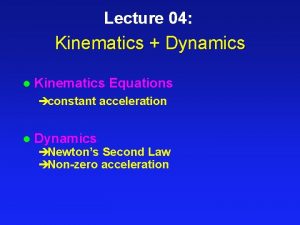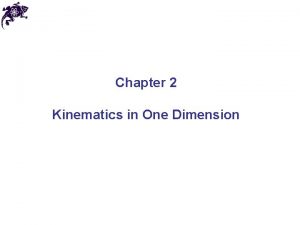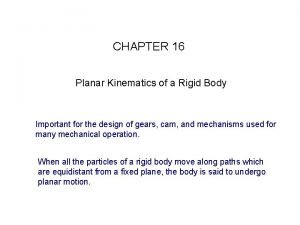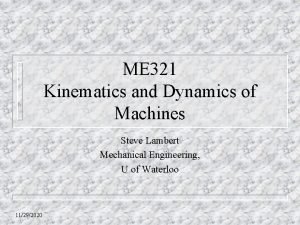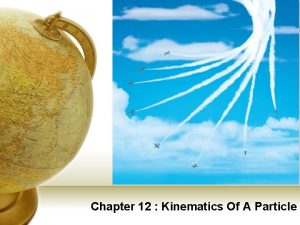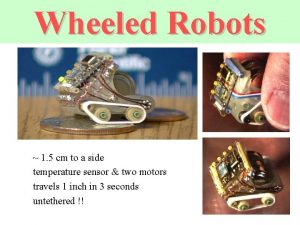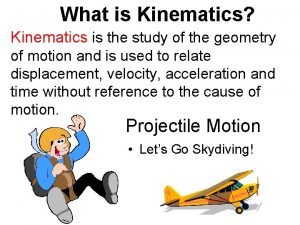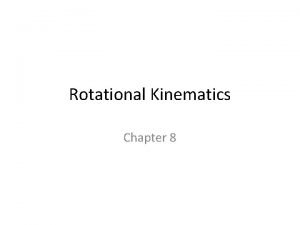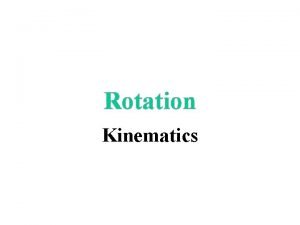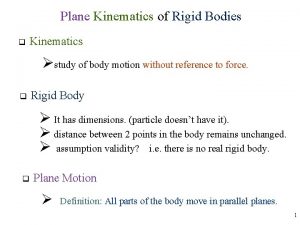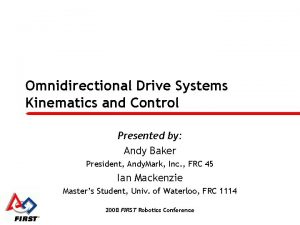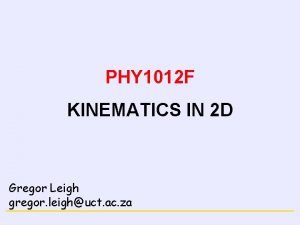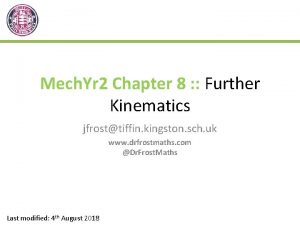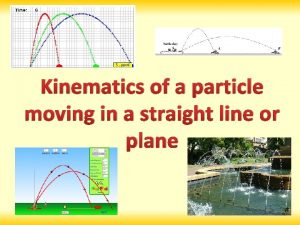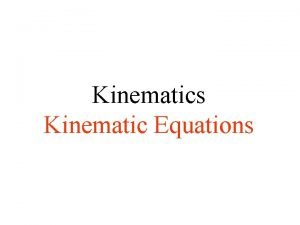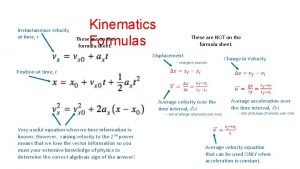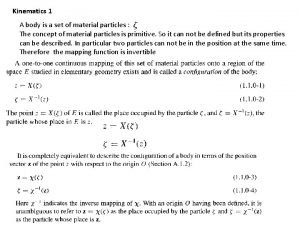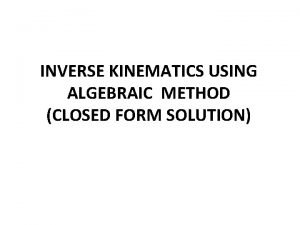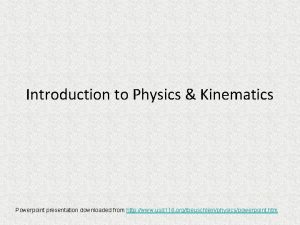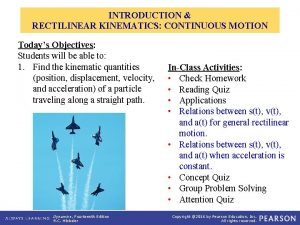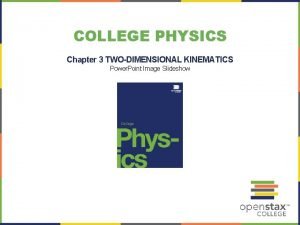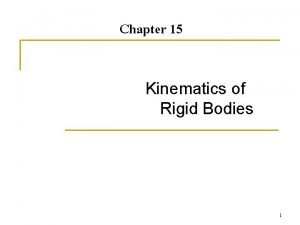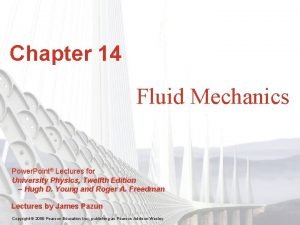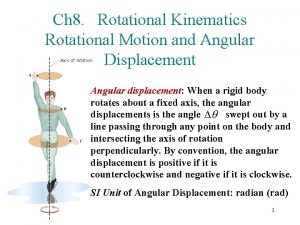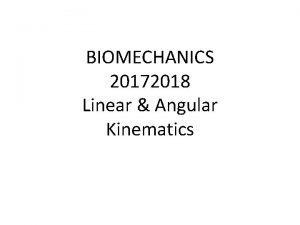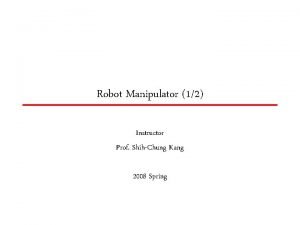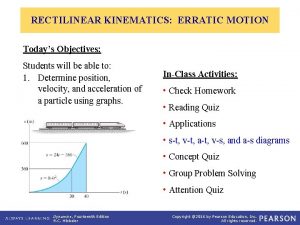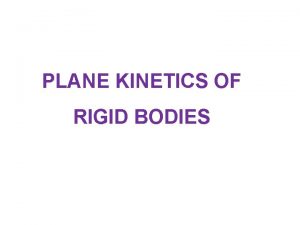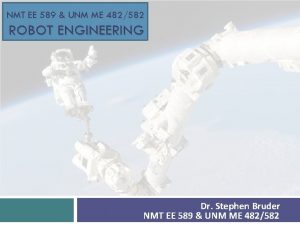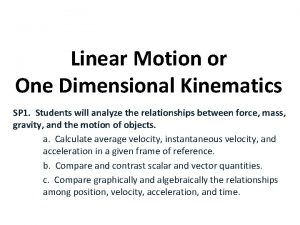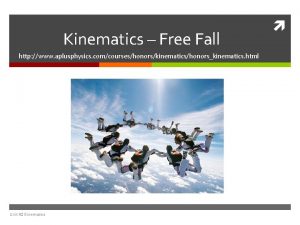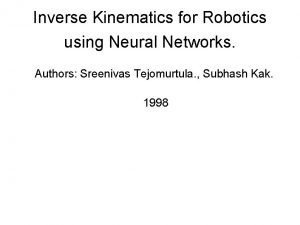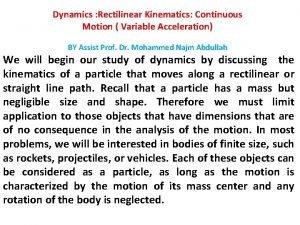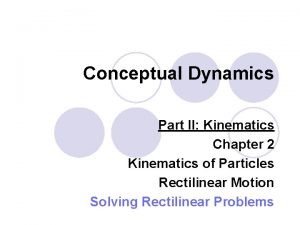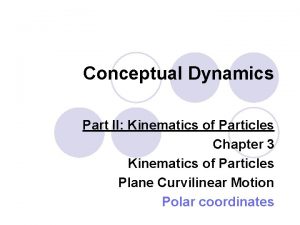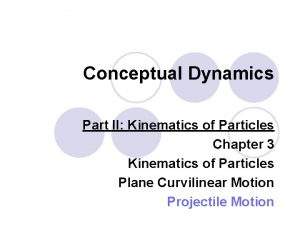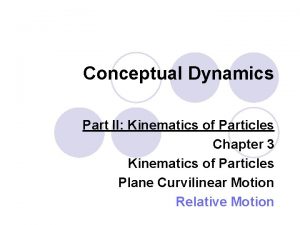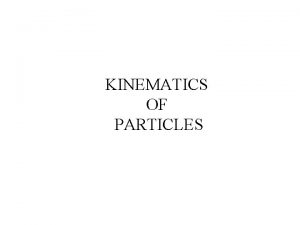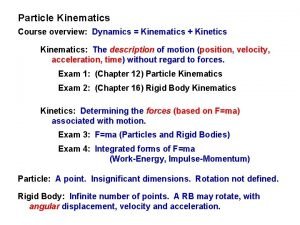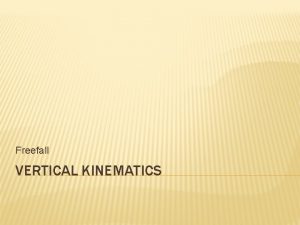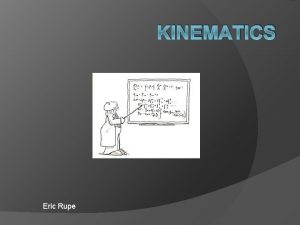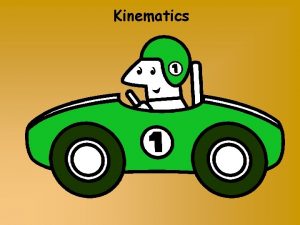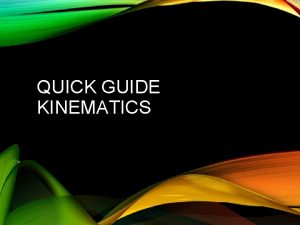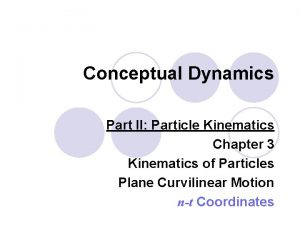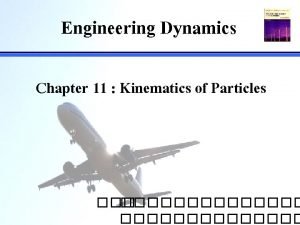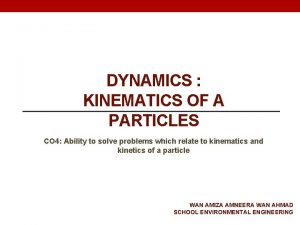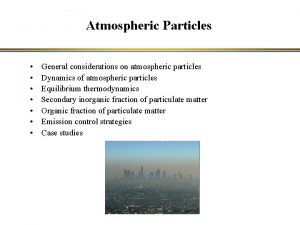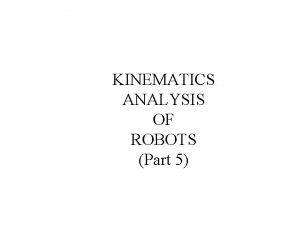Conceptual Dynamics Part II Kinematics of Particles Chapter
















































- Slides: 48

Conceptual Dynamics Part II: Kinematics of Particles Chapter 3 Kinematics of Particles Plane Curvilinear Motion Constrained & Dependent Motion

Constrained & Dependent Motion

Constrained & Dependent Motion l What is Constrained Motion?

Constrained & Dependent Motion l What is Constrained Motion? The train is constrained to move along the track. When a particle is forced to move in a particular direction.

Constrained Motion l Slot cars are an example of constrained motion.

Constrained & Dependent Motion l What is Dependent Motion?

Constrained & Dependent Motion l What is Dependent Motion? One particle is dependent on the motion of another. There is a motion relationship between them.

Rope & Pulley systems

Dependent Motion l Video ¡Eureka! The Pulley (Start at 0: 30)

Rope & Pulley Problems l If A moves, will B move? Why?

Rope & Pulley Problems l If A moves, will B move? Why? The motion of B is dependent on the motion of A.

Rope & Pulley Problems l Did B move faster or slower than A? Why?

Rope & Pulley Problems l Did B move faster or slower than A? Why? B moved slower than A.

Solving a Rope & Pulley Problem l Step 1) Choose a datum(s): ¡A datum line is fixed. ¡Used as an origin to measure distances. ¡One datum for every direction of motion.

Example 3. 7 -1 l Step 1) Choose a datum(s):

Example 3. 7 -1 l Step 1) Choose a datum(s):

Solving a Rope & Pulley Problem l Step 2) Position coordinates: ¡Measure the distances from the datum to each moving particle.

Example 3. 7 -1 l Step 2) Position coordinates:

Example 3. 7 -1 l Step 2) Position coordinates:

Solving a Rope & Pulley Problem l Step 3) Rope lengths: ¡Write down the length of each rope in terms of the position coordinates. l. Note: The number of ropes = degrees of freedom

Example 3. 7 -1 l Step 3) Rope lengths:

Example 3. 7 -1 l Step 3) Rope lengths:

Example 3. 7 -1 l Step 3) Rope lengths:

Solving a Rope & Pulley Problem l Step 4) Time derivatives: ¡Take the time derivative of the length equation to obtain the velocity and acceleration equations.

Example 3. 7 -1 l Step 4) Time derivatives:

Solving a Rope & Pulley Problem l Step 5) Solve and verify: ¡Solve the problem and make sure that the answers make sense in terms of the signs and magnitudes.

Example 3. 7 -1 l Step 5) Solve and verify: ¡Solve the problem and make sure that the answer makes sense in terms of the signs and magnitudes.

Example 3. 7 -2 l Choose a datum(s)

Example 3. 7 -2 l Choose a datum(s)

Example 3. 7 -2 l Add position coordinates

Example 3. 7 -2 l Add position coordinates

Example 3. 7 -2 l Coordinate position equation

Example 3. 7 -2 l Coordinate position equation

Example 3. 7 -2 l Time derivatives

Example 3. 7 -2 l Time derivatives 0

Dependent Motion Problem l Does the answer make sense?

Example Problems EP 3. 7 -3

Linear Bearings and Collars

Linear Bearings and Collars l Constrain the motion along a shaft.

Slots

Slots l Constrain the motion along a slot. ¡Velocity is always tangent to the slot path.

Joints

Joints l Different joints constrain motion in different ways.

Surface Contacts / Cam and Follower

Surface Contact l The motion of the particle in contact with the surface is dependent on the surface profile. ¡Position dependence ¡Velocity dependence

Cam and Follower

Cam and Follower

Example Problems EP 3. 7 -4
 Aplusphysics kinematics-horizontal kinematics
Aplusphysics kinematics-horizontal kinematics Dynamics vs kinematics
Dynamics vs kinematics Dynamics kinematics
Dynamics kinematics Rigid planar
Rigid planar Kinematics and dynamics of machines
Kinematics and dynamics of machines Dynamics of particles
Dynamics of particles Dynamics of particles
Dynamics of particles Fluid mechanics chapter
Fluid mechanics chapter Chapter 12 kinematics of a particle solutions
Chapter 12 kinematics of a particle solutions Chapter 6 ions charged particles in solution
Chapter 6 ions charged particles in solution Part part whole addition
Part part whole addition Part to part ratio definition
Part to part ratio definition Brainpop ratios
Brainpop ratios Part by part technical description example
Part by part technical description example Bar equipment layout
Bar equipment layout The phase of the moon you see depends on ______.
The phase of the moon you see depends on ______. 미니탭 gage r&r 해석
미니탭 gage r&r 해석 Tricycle kinematics
Tricycle kinematics What is kinematics
What is kinematics Kinematics 2d formulas
Kinematics 2d formulas 4 linear motion equations
4 linear motion equations Rotational kinematic equations
Rotational kinematic equations Plane kinematics of rigid bodies
Plane kinematics of rigid bodies Swerve drive kinematics
Swerve drive kinematics Range motion
Range motion Dr frost further kinematics
Dr frost further kinematics Kinematics of a particle
Kinematics of a particle What are the 4 kinematic equations
What are the 4 kinematic equations Instantaneous velocity
Instantaneous velocity Transport theorem kinematics
Transport theorem kinematics Closed form solutions
Closed form solutions Stanford manipulator jacobian
Stanford manipulator jacobian Kinematics ppt free download
Kinematics ppt free download Rectilinear kinematics
Rectilinear kinematics Continuous motion example
Continuous motion example Kinematics ppt
Kinematics ppt Planar kinematics of a rigid body
Planar kinematics of a rigid body Planar kinematics of a rigid body
Planar kinematics of a rigid body Fluid kinematics ppt
Fluid kinematics ppt Unit of angular acceleration
Unit of angular acceleration Kinematics
Kinematics Forward kinematics
Forward kinematics Erratic motion examples
Erratic motion examples Planar kinetics of a rigid body
Planar kinetics of a rigid body Forward kinematics
Forward kinematics Tape charts and motion graphs
Tape charts and motion graphs Aplusphysics kinematics-free fall answers
Aplusphysics kinematics-free fall answers Inverse kinematics
Inverse kinematics Rectilinear motion with variable acceleration
Rectilinear motion with variable acceleration

